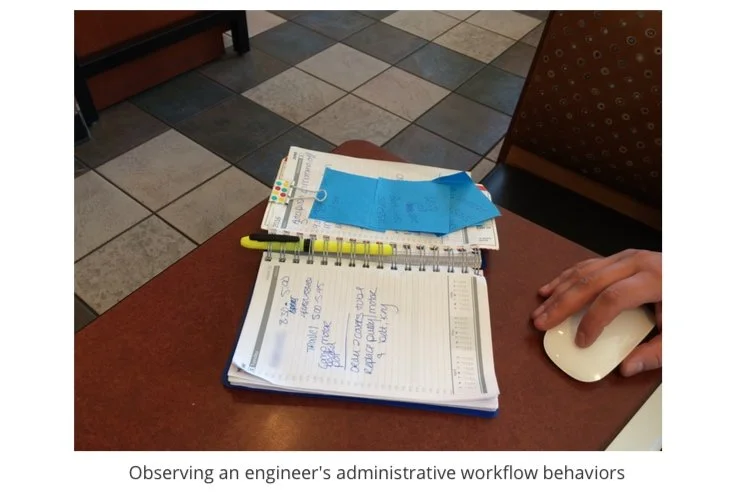2015 - 2018
FX: Optimizing the way field engineers report on their work
Problem: Field engineers need to debrief their service work, including logging hours, documenting the work they completed, parts and tools used, and other information.
How could we make this task feel like less of a chore, and take less time?
Research: To better understand their needs, I shadowed field engineers in my area of Michigan and observed how they work. Since the tool would be used by field teams country-wide, I also conducted remote interviews with field engineers from different regions to learn more.
As work progressed, another critical research tool was the formation of a “pilot team” of field engineers who volunteered to test out early versions of the new releases of our tool and offer feedback on designs. This provided me with a weekly opportunity to get user input, even when I wasn’t conducting in-person observations.
Design Work: To begin, I produced early mockups and sitemaps, which eventually gave way to a redesign using a nascent design system.
Once our design system was in place, the FX tool went through many iterations over the next few years. An important part of FX was that it be device-agnostic, so multiple breakpoints were produced for all designs.
As the tool’s usage grew and more features were needed, I ended up with more mockups than I could keep track of, and ended up creating a digital library (using Invision) to keep track of all the design work.
Over multiple years of design work and releases, my design work contributions became more oriented towards small-scale refinements and enhancements.
Outcomes: The earliest versions of the FX tool shortened the debriefing process by about 25%. This, combined with an easier learning curve, led the field engineers to adopt the tool willingly without being mandated.
Eventually, the success of FX adoption in the United States prompted other regions around the globe to adopt the tool for their field engineers as well. Today, FX continues to be used throughout GE HealthCare.


